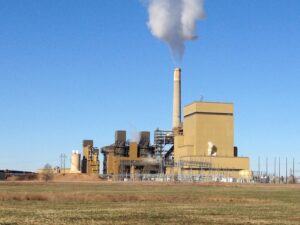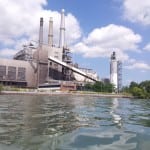The U.S. Environmental Protection Agency (EPA) said on Tuesday that it has completed a multi-year study of power plant wastewater discharges and concluded that current regulations—issued in 1982—have not kept pace with changes in the power industry over three decades. It now plans to revise existing standards for water discharges from coal-fired power plants. Revisions could include tightened restrictions on contaminants in wet scrubber wastewater streams.
“Wastewater discharged from coal ash ponds, air pollution control equipment, and other equipment at power plants can contaminate drinking water sources, cause fish and other wildlife to die and create other detrimental environental effects,” the agency said in a statement Tuesday.
The EPA did not specify when it expects to finalize the new rules. It is under pressure from environmental groups, which have said they would sue the EPA if it did not produce a rule within 60 days, Greenwire reported on Monday.
Coal combustion waste is considered a nonhazardous (solid waste) substance under the 1976 Resource Conservation and Recovery Act (RCRA) and is exempt from federal hazardous waste management regulations under that statute. Though the EPA has weighed the issue several times since then, in May 2000 it issued a regulatory determination concluding that coal waste from power plants did not need regulation as a hazardous waste under Subtitle C of RCRA.
Coal waste disposed of or stored in landfills or surface impoundments is subject to some federal water pollution control regulation requirements, however. A storage or disposal unit that has an outfall that discharges to surface water is required to meet the effluent guidelines established in the Clean Water Act (CWA) and as specified in a facility’s National Pollutant Discharge Elimination System (NPDES) permit. These requirements could become stricter by the end of 2009, the EPA said on Tuesday.
The effluent limitation guidelines for steam electric power plants were last issued in 1982 (40 CFR part 423). Since 2005—as a result of a finding that the regulated steam power industry “ranked second in discharges of toxic and nonconventional pollutants”—the agency has been conducting an intensive review of wastewater discharges from coal-fired power plants to determine whether new Clean Water Act regulations are needed.
The EPA’s study has included wastewater sampling and information-gathering visits to more than 40 facilities and submission of a questionnaire to nine utilities owning coal-fired facilities. Its data collection efforts have been primarily focusing on treatment technologies for wastewater generated by pollution controls such as flue gas desulfurization systems, which many facilities scrambled to install following the implementation of agency clean air rules.
Once the new rule for electric power plants is finalized, the EPA and states are expected to incorporate the new standards into wastewater discharge permits.
More information about the EPA’s study is provided in an interim report published in August 2008 (PDF). A final study will be published later this year.
Sources: EPA, Greenwire, POWERnews








